32 must-see samurai movies for Ghost of Tsushima fans
Jin Sakai’s sword cuts deep, and so do these classic movies
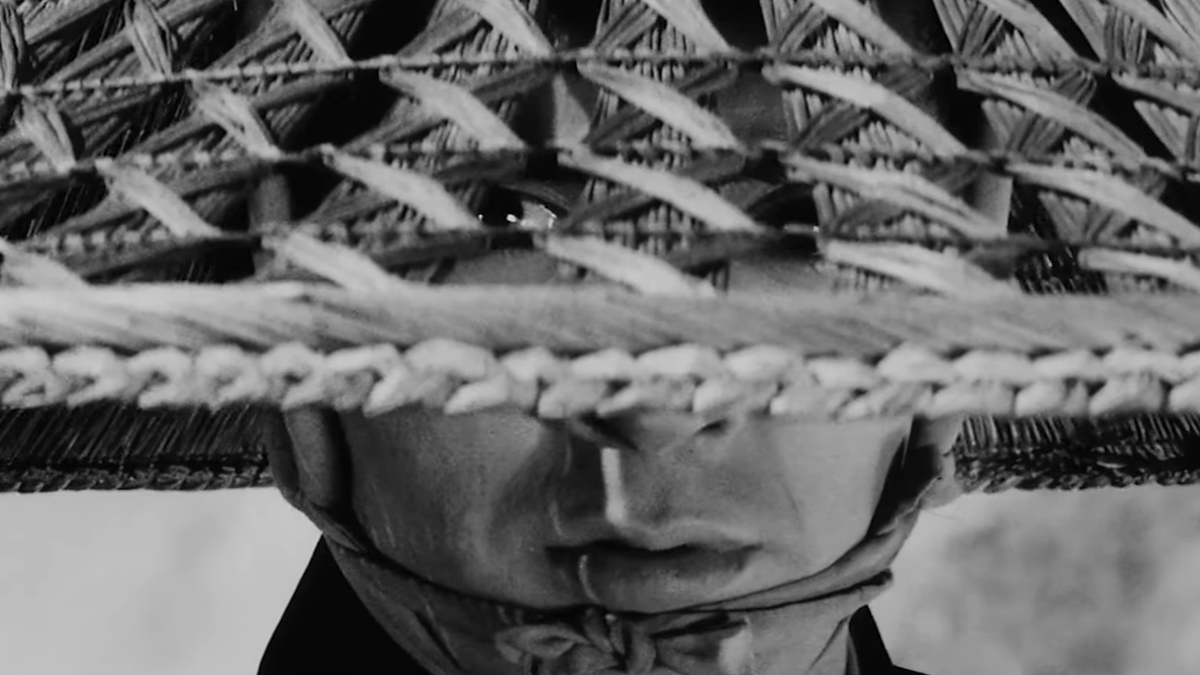
In 2020, deep in worldwide quarantine amid the COVID-19 pandemic, the developers at Sucker Punch Productions unleashed Ghost of Tsushima, the acclaimed open-world samurai adventure that offered cinematic immersion into history like no other. Playing Ghost of Tsushima could easily make anyone eager to seek out the best samurai movies ever made.
Set in 1274, players take control of the character Jin Sakai (portrayed by actor Daisuke Tsuji), the proud son of Clan Sakai who stands alone after an invading Mongol fleet decimates Sakai’s forces. Left for dead, Jin Sakai retrains in a new form of guerilla combat and adopts a new shadowy moniker, “The Ghost,” whilst assembling a team of allies to help him exact revenge and protect Japan from its invaders.
Unsurprisingly, Sucker Punch took all kinds of inspiration from samurai media, most especially movies. (The game even features a mode called “Kurosawa Mode,” in honor of the filmmaker Akira Kurosawa.) For fans of the game who want more of its vibes in movie form, here are 32 must-see films – including a few Chinese-language wuxia pictures – that show off the ways of the sword.
32. Lone Wolf and Cub: Sword of Vengeance (1972)
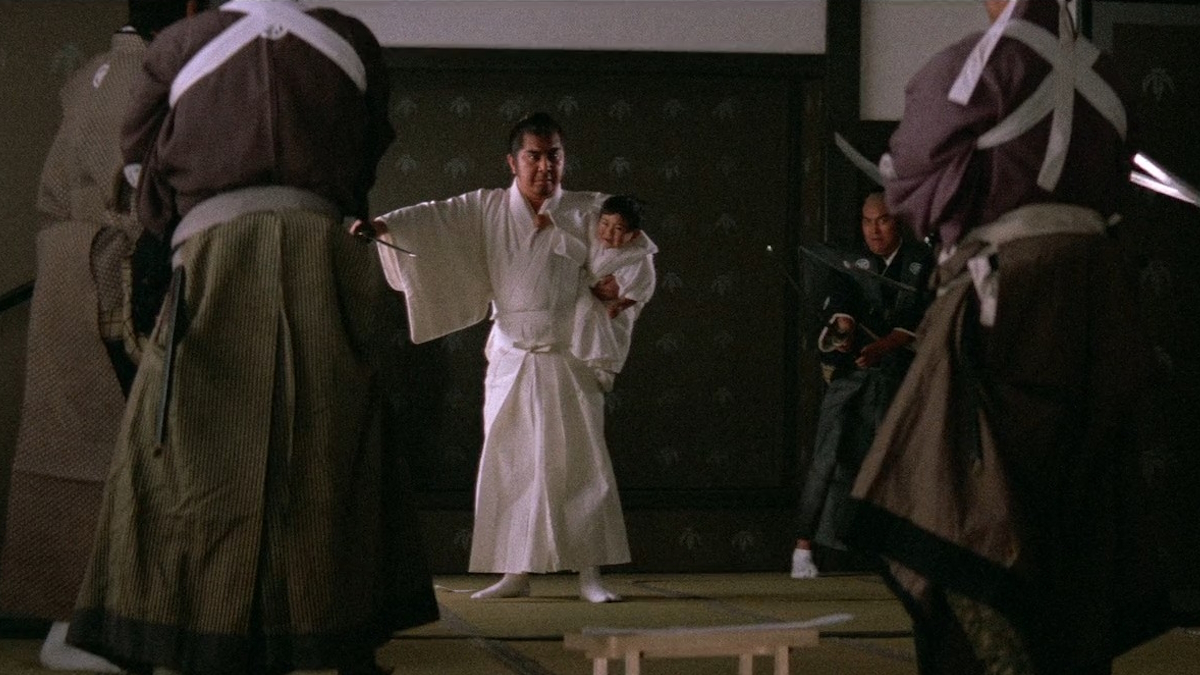
Before The Mandalorian, there was Lone Wolf and Cub. Based on the popular manga series by Kazuou Koike and Goseki Kojima, the 1972 film Lone Wolf and Cub: Sword of Vengeance stars Tomisaburo Wakayama as a 19th century ronin who wanders Japan lending out his swordsmanship as an assassin-for-hire, all while accompanied by his adorable infant son. Sword of Vengeance is the first of six Lone Wolf and Cub movies, all of which are a must-watch for any aspiring chanbara aficionado. Ghost of Tsushima fans drawn to the game’s central theme of revenge, feast your eyeballs on Lone Wolf and Cub.
31. Lady Snowblood (1973)
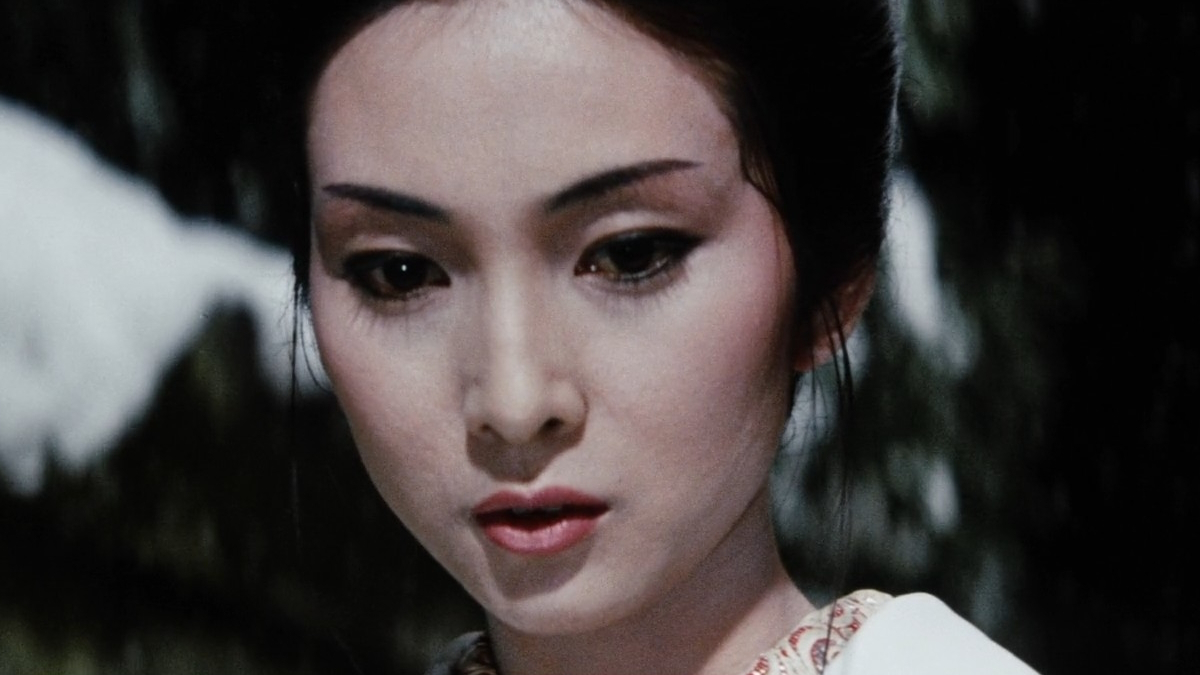
Gorgeous and arresting, Lady Snowblood from Toshiya Fujita follows a woman in the 19th century who seeks vengeance against her mother’s rapists and half-brother’s murderers. Produced on a low budget (exact figures remain unknown) and designed as a vehicle for actress/singer Meiko Kaji to star, Lady Snowblood is violent poetry in motion, a mesmerizing dance between crimson bloodshed and pure white snowfall. The movie was a major inspiration for Quentin Tarantino’s Kill Bill, and in fact Tarantino instructed his cast and crew to review Lady Snowblood during filming in order to achieve the movie’s vibe.
30. The Hidden Fortress (1958)
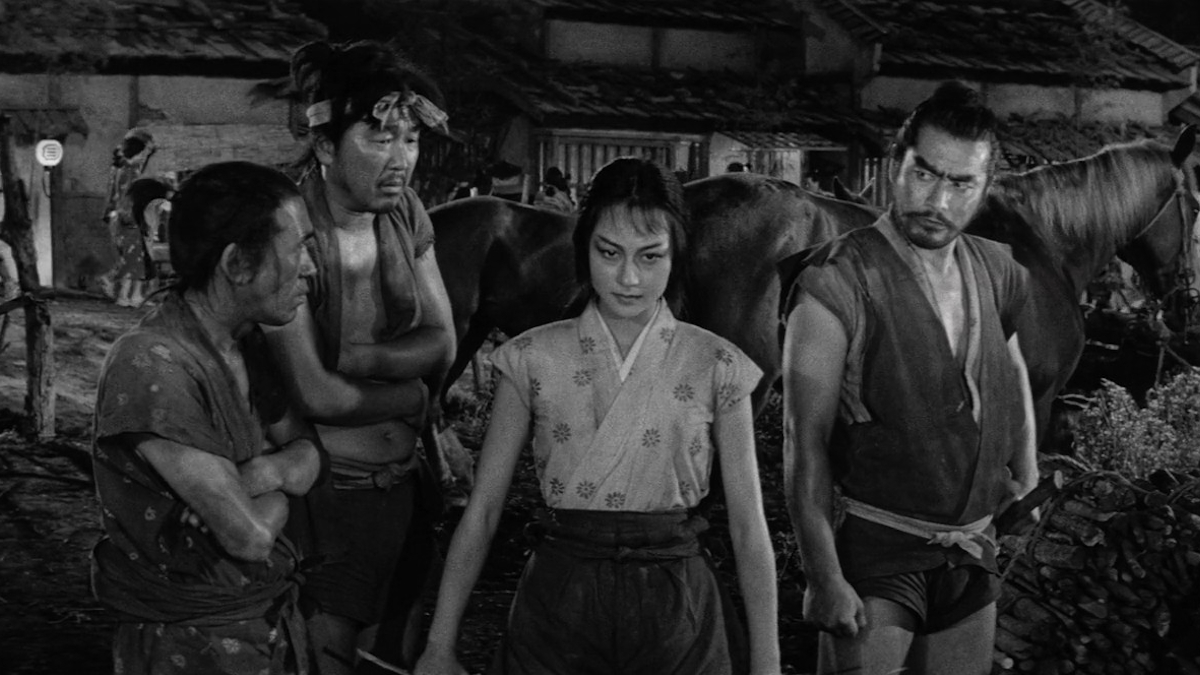
Renowned Japanese director Akira Kurosawa famously made a number of acclaimed samurai “jidaigeki” (period drama) movies that are revered today by artists and cinephiles alike. Among Kurosawa’s biggest fans was/is George Lucas, who conceived of Star Wars with tremendous inspiration from Kurosawa’s 1958 classic The Hidden Fortress. The film tells of two comedic peasants who agree to safely escort a man and a woman through dangerous territory, unaware their clients are a military general and a princess. Rebuking notions that old samurai movies are too violent and austere, The Hidden Fortress is pretty much a perfect adventure movie that makes infiltration and espionage through samurai castles a total blast.
29. Azumi (2003)
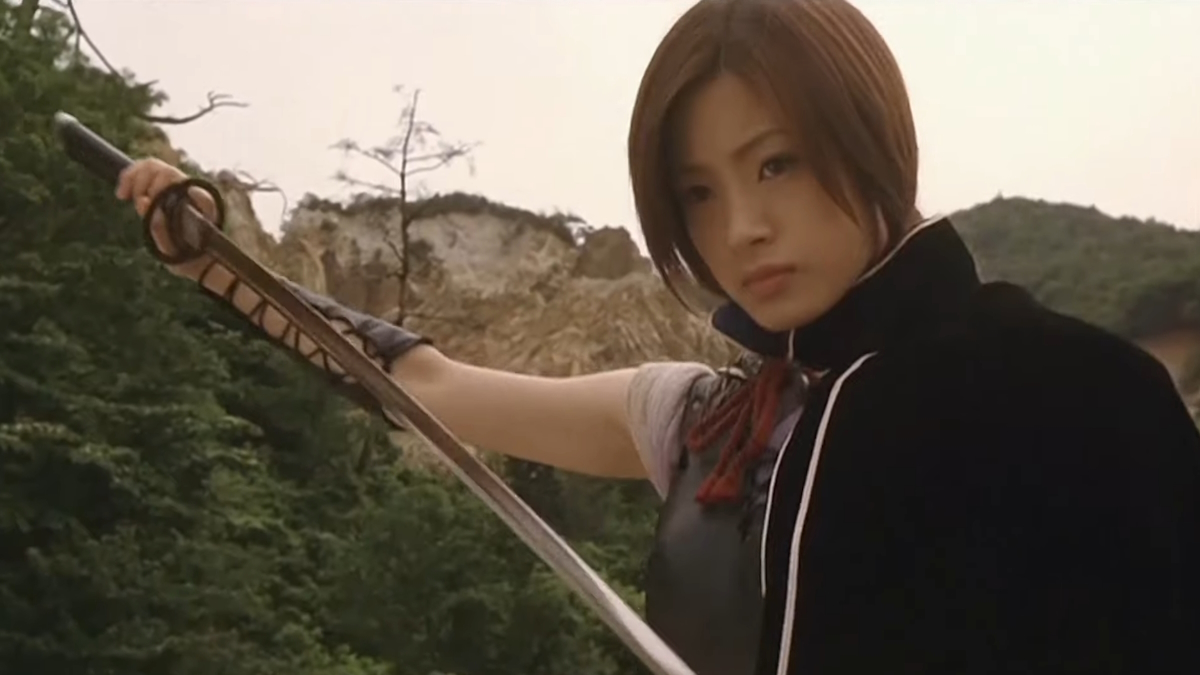
From B-movie director Ryuhei Kitamura, Azumi is an adaptation of Yū Koyama’s manga series about a skilled assassin, played by former pop star Aya Ueto, who questions her violent upbringing – and the master who trained her – while tasked with killing power-hungry warlords who threaten Japan’s post-civil war peace. With Azumi, Kitamura exhibits his unique brand of action direction that make an excellent case that he is one of the best, if also underrated genre filmmakers around. Ghost of Tsushima fans need to go out of their way to check out Azumi.
Sign up for the Total Film Newsletter
Bringing all the latest movie news, features, and reviews to your inbox
28. Blade of the Immortal (2017)
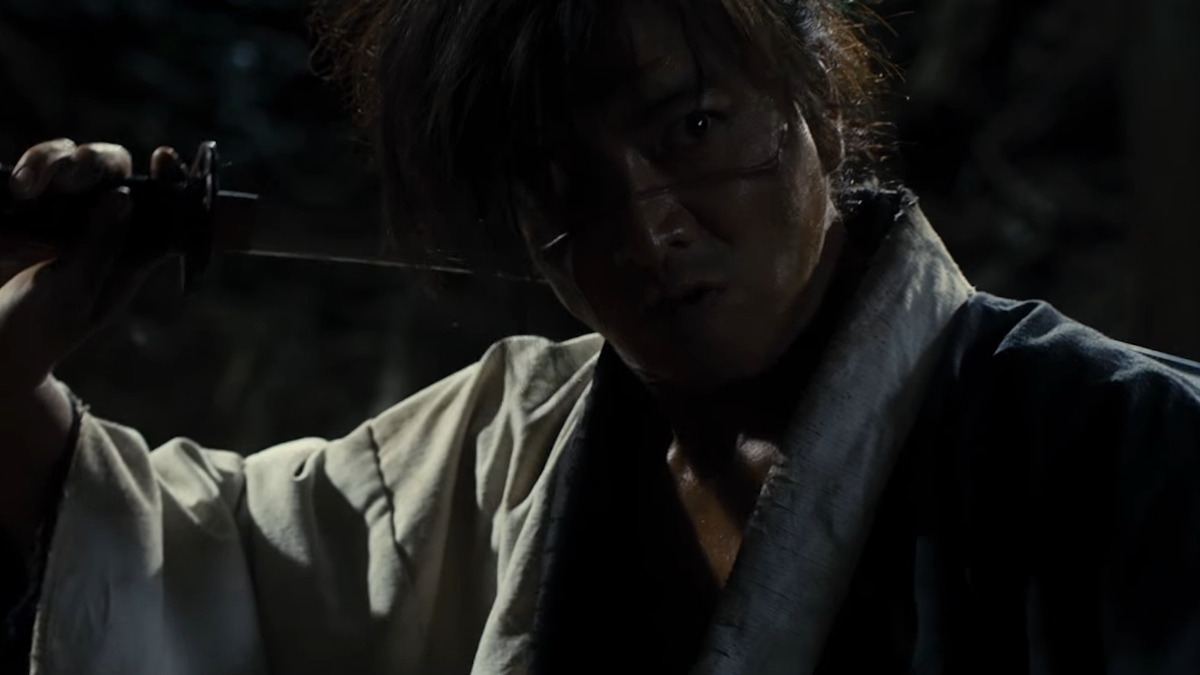
In 2017, splatter auteur Takashi Miike showed he hadn’t missed a beat with his ONE HUNDREDTH (you read that right) directorial effort, Blade of the Immortal. Based on the manga series, Blade of the Immortal tells of a swordsman, Manji (Takuya Kimura) who is cursed with immortality until he kills a thousand souls using a cursed blade. Brimming with exquisite violence and loaded with melodrama bemoaning unholy powers, Blade of the Immortal is a bloodsoaked blast from beginning to end.
27. Snake Eyes: G.I. Joe Origins (2021)
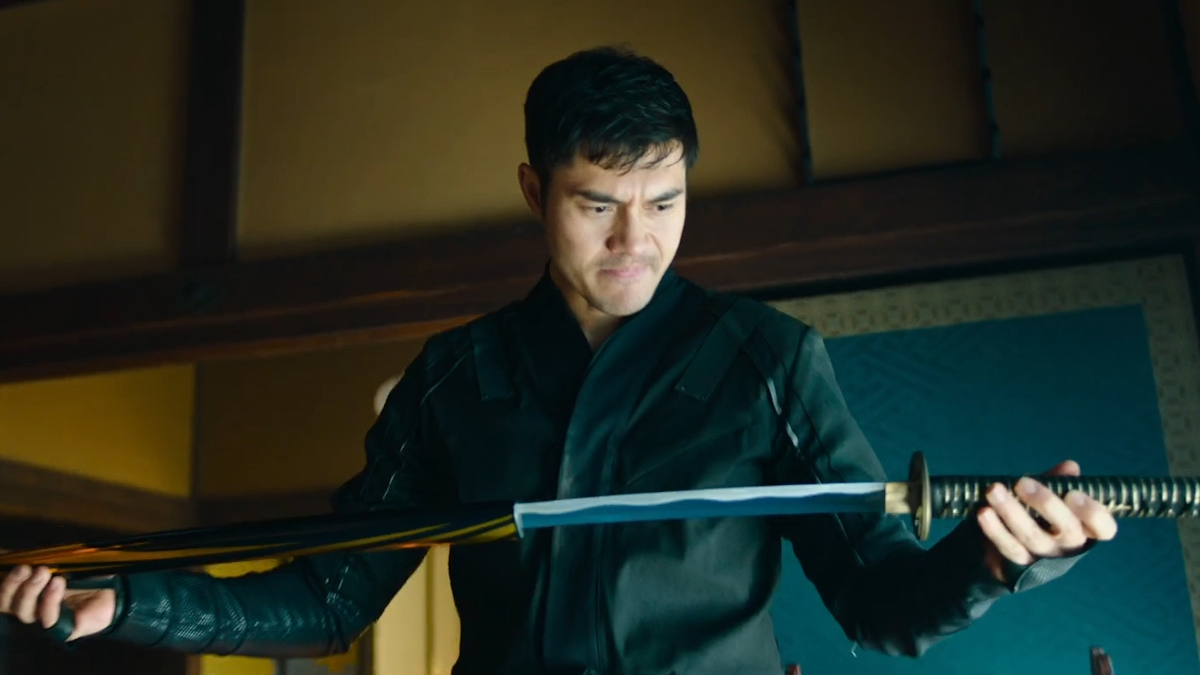
It failed to relaunch the G.I. Joe franchise and it was wildly unpopular with critics, but Snake Eyes: G.I. Joe Origins should still appeal to Ghost of Tsushima fans in a few important ways. Both feature two protagonists who train in the ways of the sword and have a penchant for black outfits, all while using their new identities to intimidate their foes. Although Snake Eyes suffers from horrid action direction – there’s an unshakable absence of coherence and rhythm – Crazy Rich Asians star Henry Golding and Warrior’s Andrew Koji together show off unbelievable potential as real action stars the likes of which Hollywood hasn’t seen in years.
26. Kill Bill Vol. 1 (2003) and Kill Bill Vol. 2 (2004)
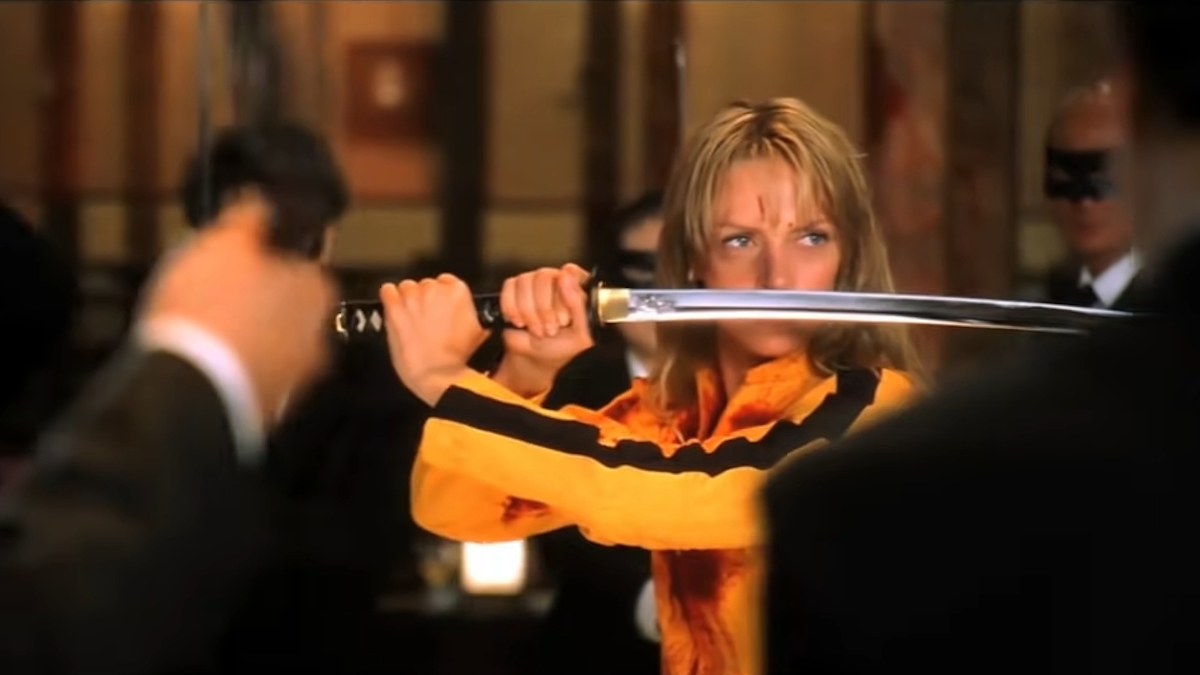
Bursting from writer/director Quentin Tarantino, the stylish Kill Bill duology pays affectionate homage to samurai films, yakuza pictures, and Chinese wuxia all in one. Uma Thurman, of course, stars as “The Bride,” a swordswoman out for revenge against assassins who came after her on her wedding day. Like Ghost of Tsushima, The Bride endures a devastating defeat that kicks off a bloody road to vengeance. Kill Bill boasts some of the finest swordplay in movie history, all while giving mainstream audiences a crash course in the aesthetics of East Asian action cinema.
25. Hero (2002)
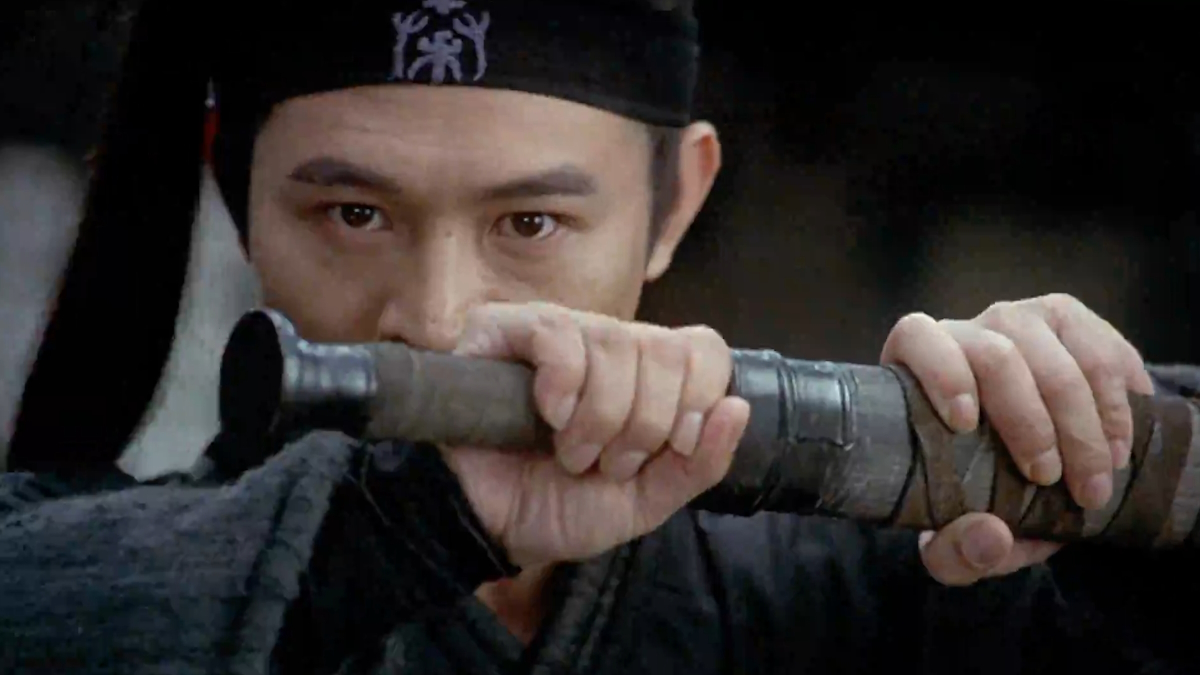
An exceptional Chinese martial arts epic, Hero stars movie legend Jet Li as a nameless swordsman who recounts to the king, Qin Shi Huang (Chen Dao Ming) his battles with feared assassins who attempted to take the king’s life. Little does the king know the true motivations of the man who stands before him. While Ghost of Tsushima is an immersive experience set in historical Japan and clearly influenced by samurai films, the samurai and wuxia genres spiritually share a lot in common as rousing tales of bravery, heroism, and standing against tyranny despite the odds. Hero is one of several blockbuster wuxia that was released internationally to wide acclaim, and should not be missed by anyone.
24. Onibaba (1964)
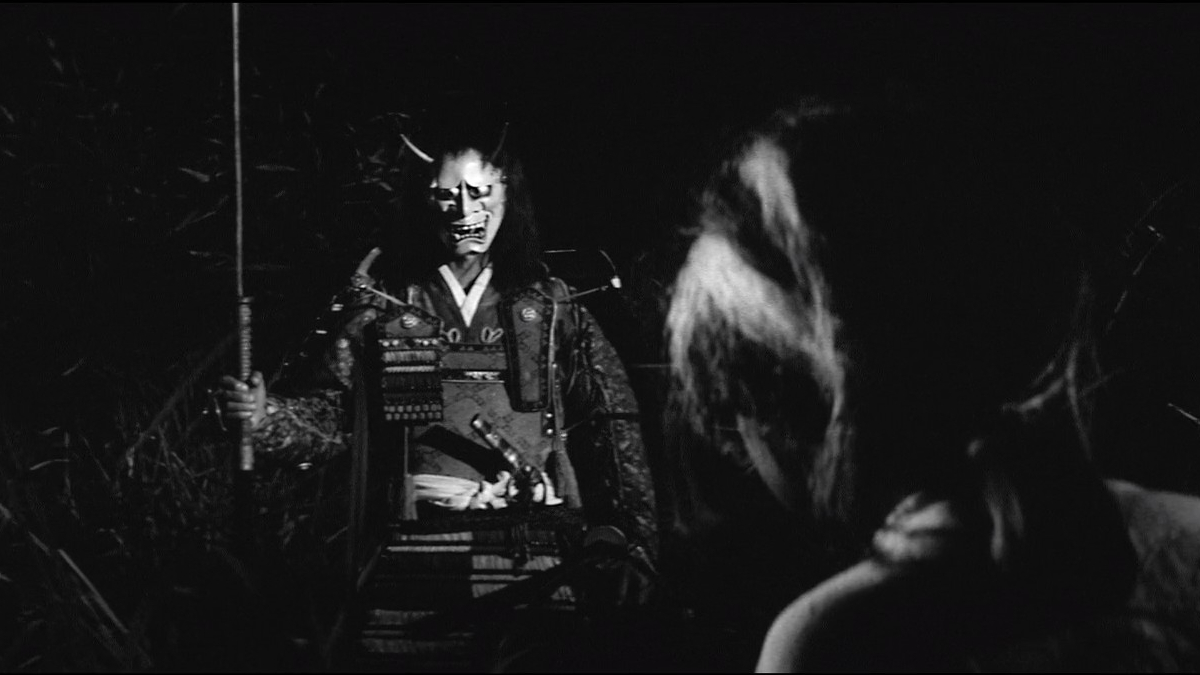
One of the most disturbing supernatural horror movies ever made comes from Japanese director Kaneto Shindō, with his 1964 classic Onibaba (translated as “demon hag”). Set in 14th century Kyoto amid Japanese civil war, two women – a widow and her mother-in-law – lure lost samurai to steal their armaments for money. When a neighbor gets between them, the older woman finds herself succumbing to an unspeakable evil contained in a terrifying demon-like mask. A samurai movie light on action but heavy on atmospheric dread, Onibaba is a terrifying classic that surely played an influence over Ghost of Tsushima’s supernatural-oriented multiplayer mode.
23. Yojimbo (1961) and Sanjuro (1962)
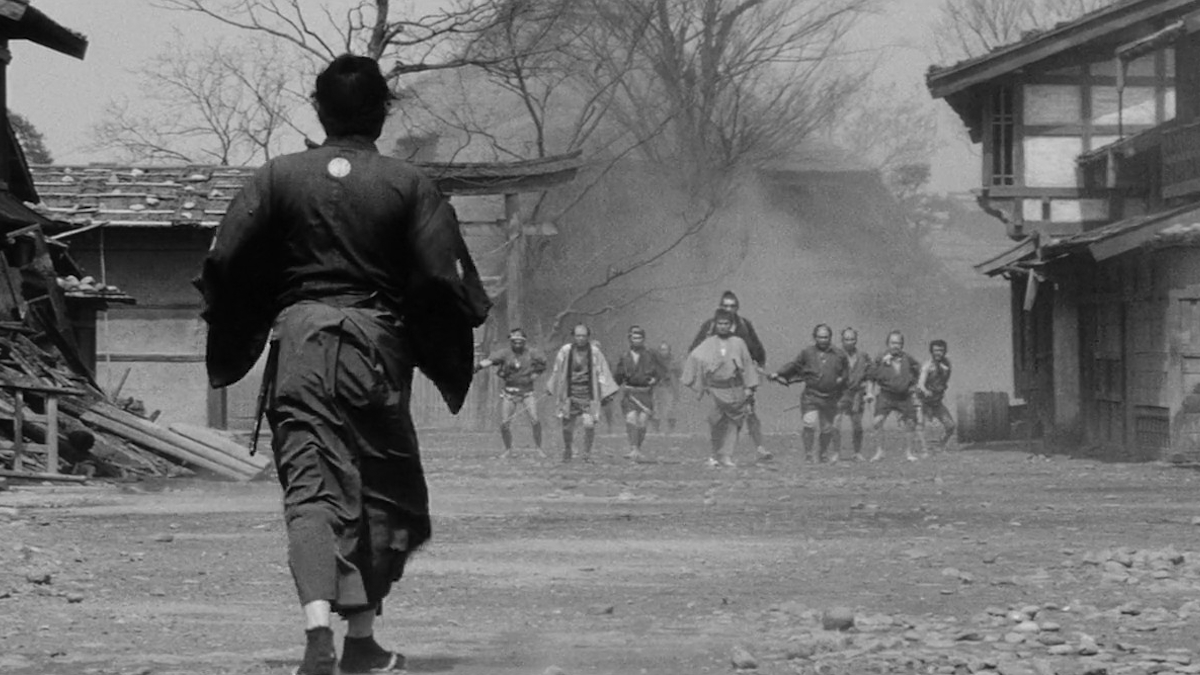
Akira Kurosawa and actor Toshiro Mifune were a filmmaking dream team, having worked together on almost a dozen iconic films that romanticize Japan’s samurai history. Among their most famous and influential works remains Yojimbo, in which Mifune plays a wandering ronin who finds himself in a town torn apart by crime lords and the factions all seeking his talents. Meanwhile, the sequel Sanjuro – built over the bones of a completely different script – sees Mifune return, in a more comedic-oriented tale. Mifune is in maximum form in both movies however, as a prototypical hard-edged anti-hero with loyalty to no one but himself. While Kurosawa himself was inspired by film noir, his Yojimbo inspired Italian director Sergio Leone to churn out a mega-classic of his own: A Fistful of Dollars.
22. Casshern (2004)

A visual effects-heavy spectacle from director Kazuaki Kiriya, Casshern is a stylish live-action adaptation of the classic ninja superhero anime Neo-Human Casshern. Set in the distant future, an artificially-designed hero named Casshern rises from the grave to save the world from tearing itself apart. (Such a story should be very familiar to Ghost of Tsushima fans.) Although it offers plenty more style than substance, Casshern is a rollicking two hours of fist-pumping goodness, with imagination bursting at the seams while tossing any sense of realism far out the window.
21. Versus (2000)
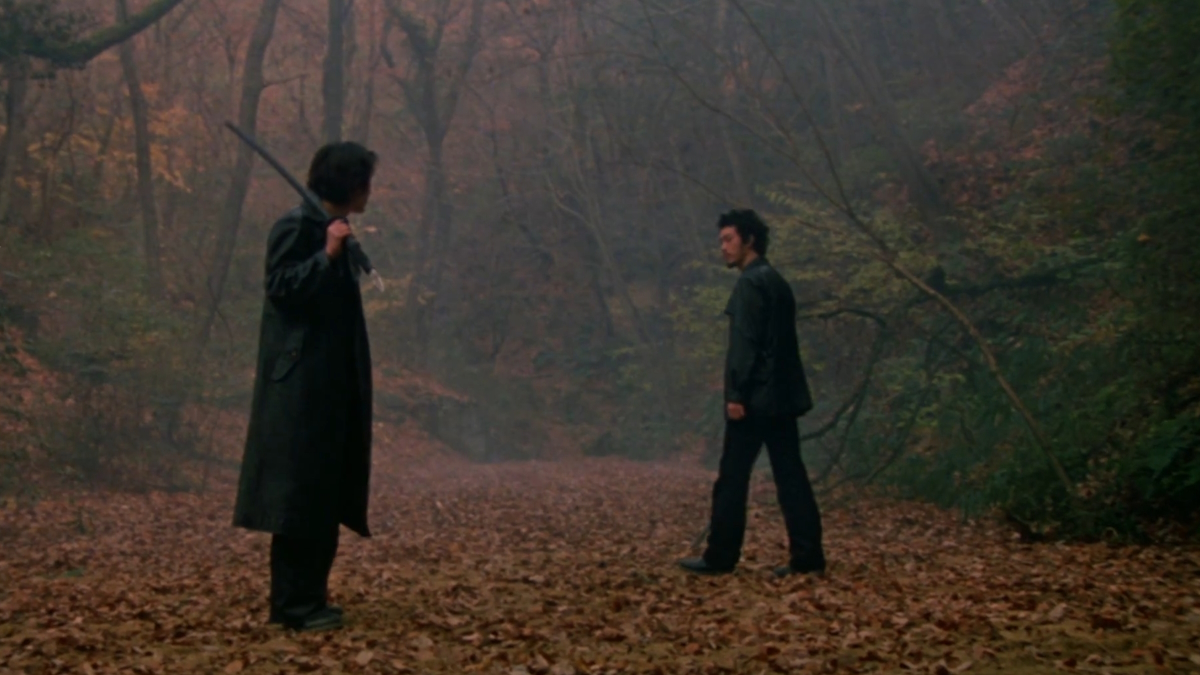
Ryuhei Kitamura put the world on notice with his debut indie feature Versus, in which runaway prisoners and Yakuza gangsters – all of them armed with guns and samurai swords – find themselves in a haunted forest overrun by zombies. Tak Sakaguchi and Hideo Sakaki co-star as rivals in Kitamura’s cult grindhouse classic, which also features famed video game designer Hideo Kojima (of Metal Gear Solid and Death Stranding) as a zombified extra. Kitamura came out swinging with Versus, and it’s a must-see for anyone who craves a midnight movie feast. Especially Ghost of Tsushima fans who know what it’s like to take up swords against hordes of evil.
20. Ninja: Shadow of a Tear (2013)
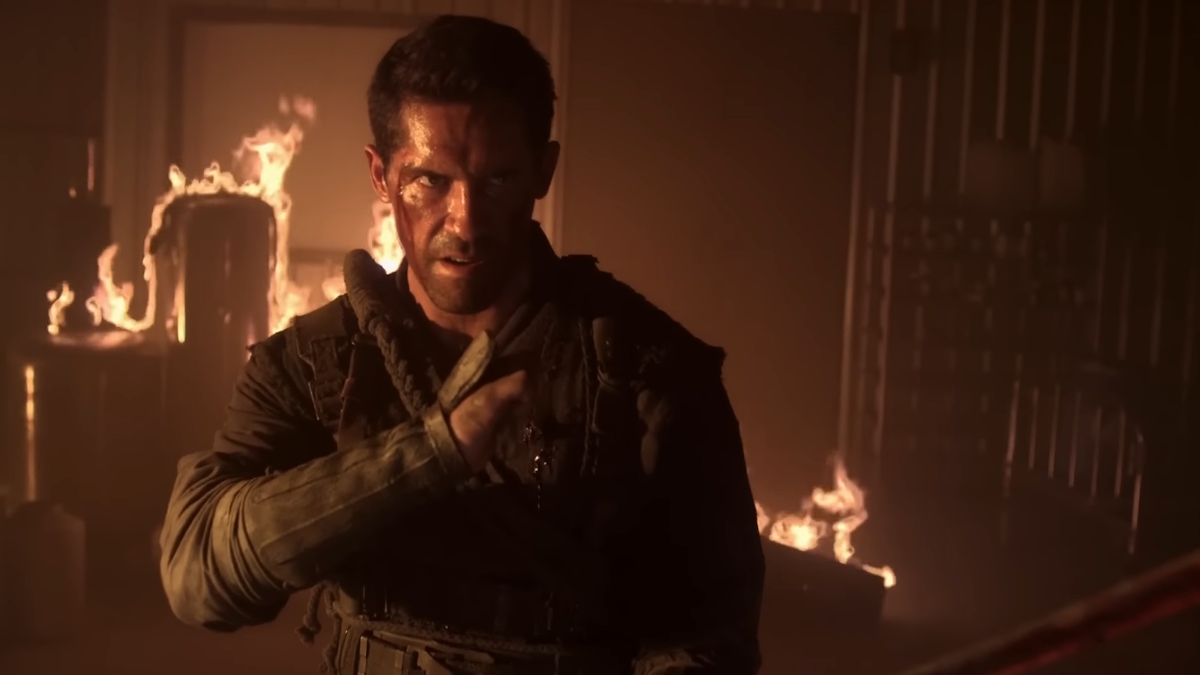
A throwback to the ninja craze of the ‘90s, Scott Adkins reprises his role as orphaned American ninja Casey Bowman, from the 2009 direct-to-DVD film Ninja, for its butt-kicking 2013 sequel Ninja: Shadow of a Tear. After Casey’s domestic life is brutally shattered, Casey teams up with an old friend, Nakabara (actor and real-life ninjutsu expert Kane Kosugi) to hunt down those responsible. Scott Adkins has long reigned as one of Hollywood’s nearly-extinct heroes of B-movie action, and Ninja: Shadow of a Tear features Adkins proving his dominance.
19. Silence (2016)
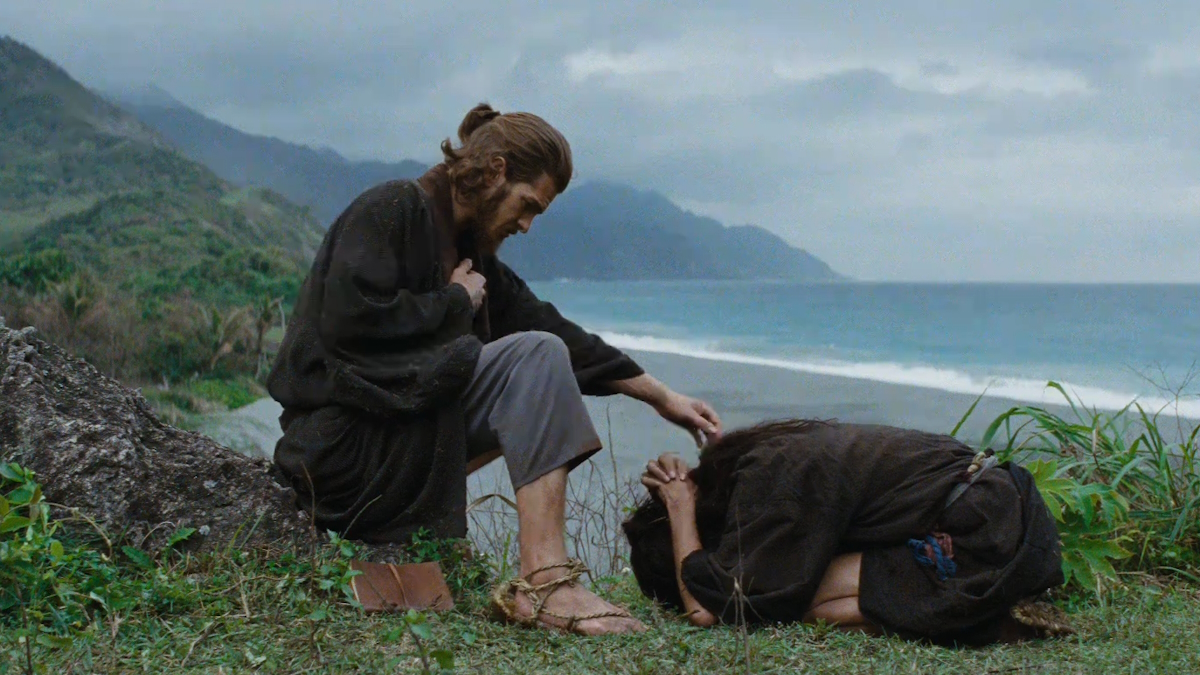
A passion project for Martin Scorsese ever since he read Shūsaku Endō’s 1966 source novel of the same name, Silence follows two 17th century Jesuit priests – played by Andrew Garfield and Adam Driver – who travel to Edo Japan to locate their missing teacher (Liam Neeson). Their search takes them into the heart of hostile territory, with Japan’s own adherents to the faith suppressed by the ruling Tokugawa shogunate. Though Silence is far from an action film, it is a required viewing not just because it’s among Scorsese’s finest works to date, but fans of Ghost of Tsushima get an even deeper understanding of Japan’s tumultuous socio-cultural history.
18. Three Outlaw Samurai (1964)
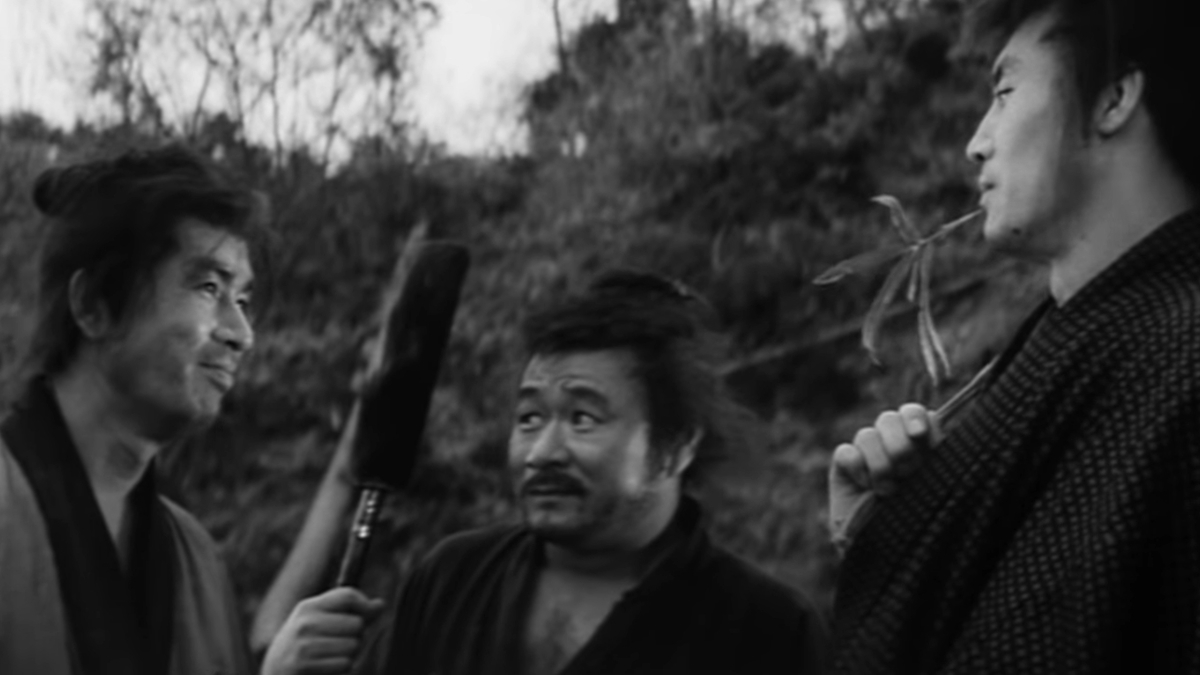
The code of Bushidō is field tested in Hideo Gosha’s chanbara classic Three Outlaw Samurai, a feature film prequel to the hit TV series from Japan. The show’s stars Tetsuro Tamba, Isamu Nagato, and Mikijirō Hira reprise their roles to reveal how their characters met: A ronin (Tamba) is hired with two other swordsmen (Nagato and Hira) to execute the peasants who’ve kidnapped the daughter of a corrupt official. Ruminations over what is right and what is just are probed at blade-point, and Three Outlaw Samurai is a deeply engaging counterpoint to the famous films of Akira Kurosawa, with broader archetypical samurai who each feel alive in their own ways.
17. Bunraku (2010)
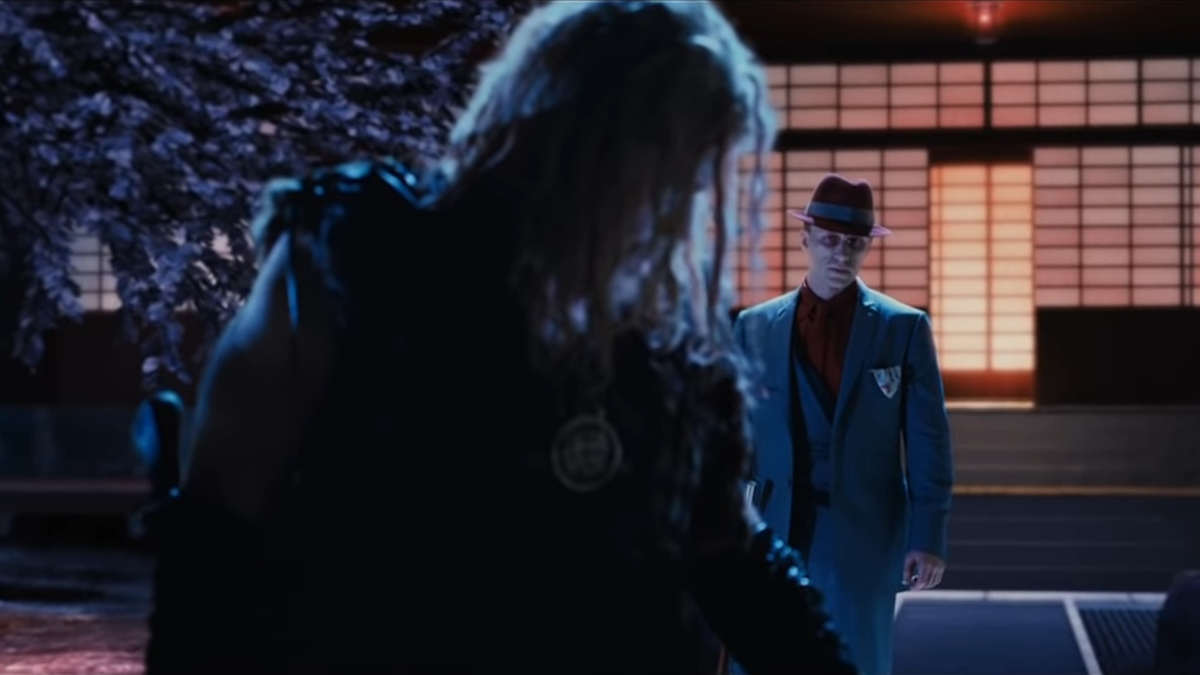
A bizarre, under-the-radar feature with a star-studded cast, Guy Moshe’s Bunraku tells of a cowboy without a gun (Josh Hartnett) and a samurai without a sword (Gackt) who team up in this post-apocalyptic future to seek vengeance against a powerful crime boss known as “The Woodcutter” (Ron Perlman). Woody Harrelson, Kevin McKidd, and Demi Moore round out the cast in this highly-stylized action movie that takes its name from Japanese puppet theater. The movie lives up to its title to often feel more like a stage play than a movie, but that’s hardly a bad thing when it’s also so much fun. Ghost of Tsushima fans, you’re in for a treat.
16. Mortal Kombat (2021)
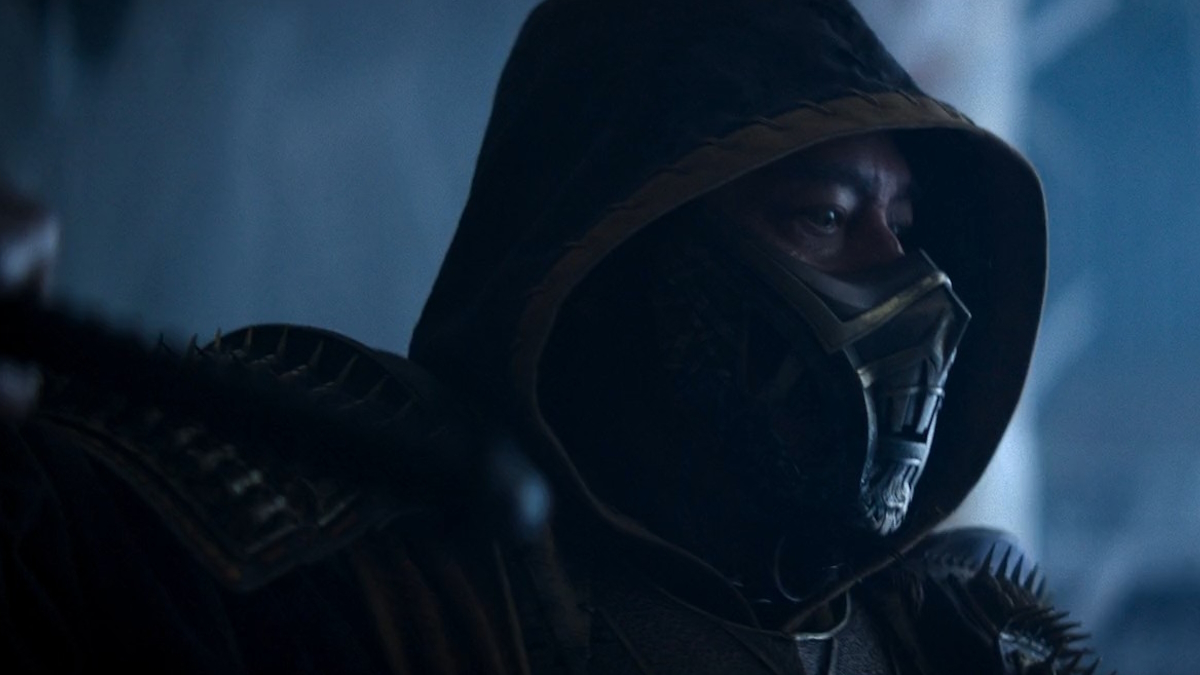
If you’re a Ghost of Tsushima fan, chances are you’re already well aware of Mortal Kombat. While the first film adaptation released in 1995 is still the GOAT, the 2021 remake has its merits. By that we mean the final fight with Scorpion (Hiroyuki Sanada) and Sub-Zero (The Raid’s Joe Taslim), which demonstrates more thought and care put into it than the rest of the movie. Though the movie as a whole falls short of expectations – Where is Johnny Cage?!? – Mortal Kombat makes for a great beer-and-pizza night with the boys, and an exceptionally skilled Sanada putting more effort than required keeps Mortal Kombat from dooming itself to the netherrealm.
15. 47 Ronin (2013)
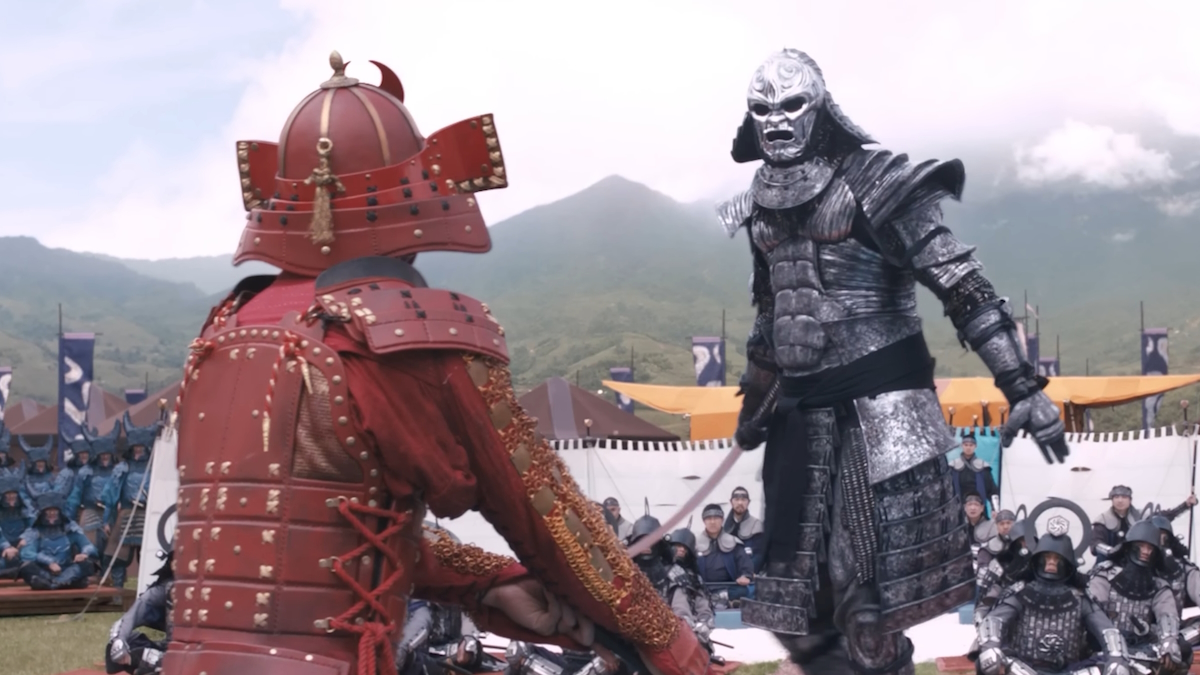
47 Ronin with Keanu Reeves was one of the biggest box office bombs of the 2010s, so much so that it left Universal Studios in debt at the end of the year. But as a heightened fantasy brimming with monsters, 47 Ronin is an unintentionally great video game movie that should definitely appeal to fans of Ghost of Tsushima. Keanu Reeves is finely attuned to his wavelengths here as a half-Japanese, half-English samurai who joins 46 other masterless samurai in seeking revenge against a tyrant. While the legend of the true 47 Ronin deserves a better, more honorable movie, what Reeves delivers – alongside Hiroyuki Sanada, Tadanobu Asano, Rinko Kikuchi, and Cary-Hiroyuki Tagawa – is nothing short of pure entertainment.
14. Shadow (2018)
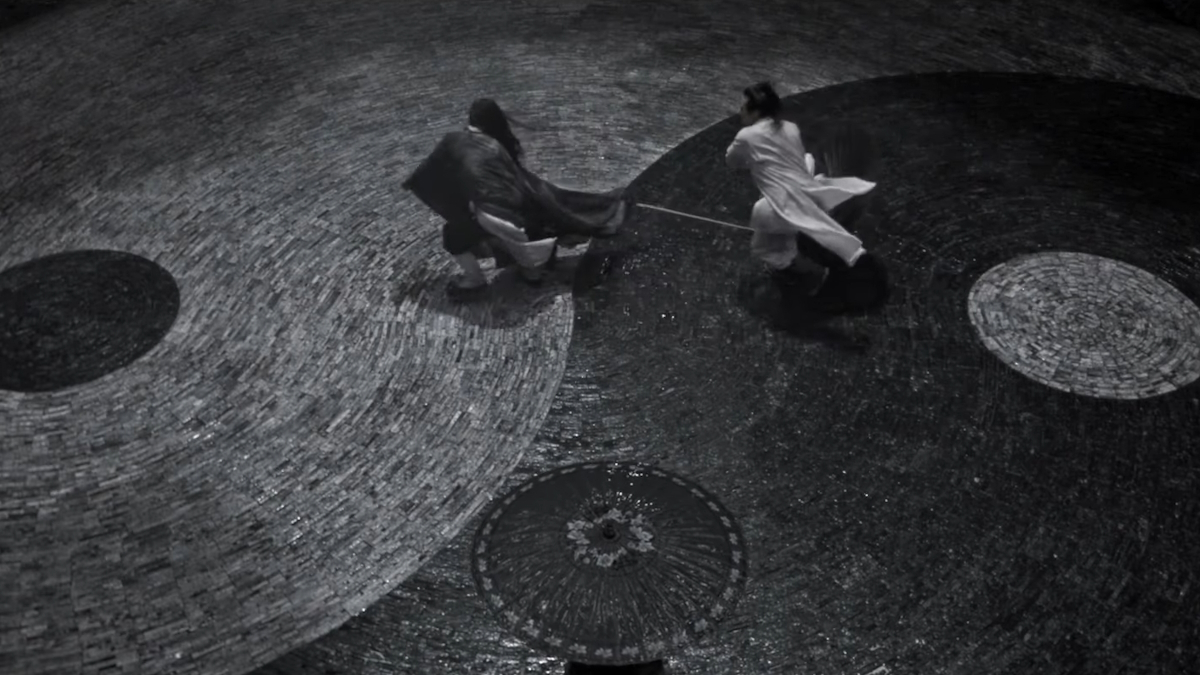
In Ghost of Tsushima, players can turn on a feature called “Kurosawa Mode,” which renders the game to look like a black-and-white samurai film from the ‘50s and ‘60s. While it’s nothing more than a visual filter, it is still a novel experiment. Fans of the game should then consider checking out Zhang Yimou’s Chinese blockbuster Shadow, released to acclaim in 2018. While shot in color, the movie’s production design is completely black and white, from sets to costumes, in order to evoke the feel of Chinese ink paintings. (Its story is also great, being a Kagemusha-like tale of political intrigue and identity deception.) The movie is spectacular in every regard, especially its action, but seek it out in 4K. Whereas Ghost of Tsushima simply turns down the color, Shadow immerses viewers into something else entirely.
13. Killing (2018)
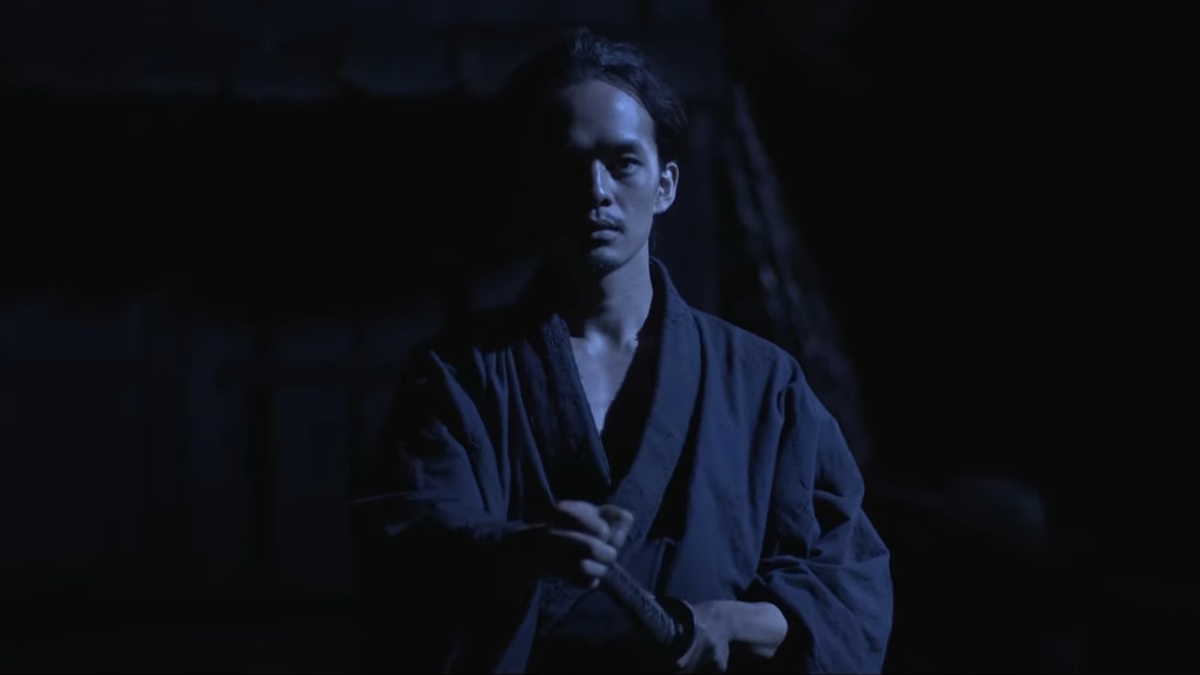
Cult filmmaking icon Shinya Tsukamoto, who emerged onto the scene with his body horror picture Tetsuo: The Iron Man in 1989, delivered in 2018 a brutal feature that dispels any romantic imagery around samurai. Amid civil war brewing, a ronin who has taken up residence in a small village finds himself confronted by enemy outlaws. Tsukamoto is a film director like no other, and his first samurai movie shouldn’t be missed by anyone drawn to both extreme violence and dark psychology.
12. Revenge of the Ninja (1983)
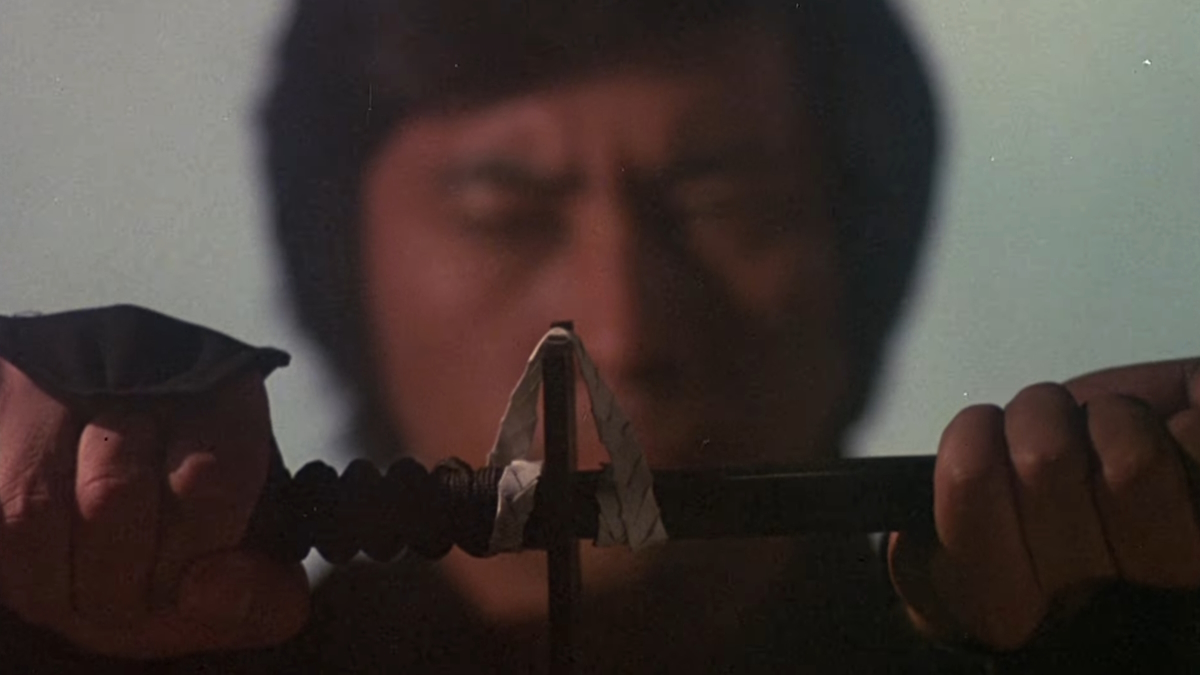
When the Japanese ninja briefly overtook the American imagination, indie studio Cannon Films unleashed an anthology series of cult ninja flicks. The best of them is 1983’s Revenge of the Ninja, starring real-life ninjutsu expert Sho Kosugi. The story tells of a ninja master who uses his ancient skills in the late 20th century, to protect his son from ruthless gangsters on both sides of the Pacific. Sho Kosugi is simply one of the best to ever do it and deserves more recognition than he enjoys now. Find out why in Revenge of the Ninja.
11. The Last Samurai (2003)
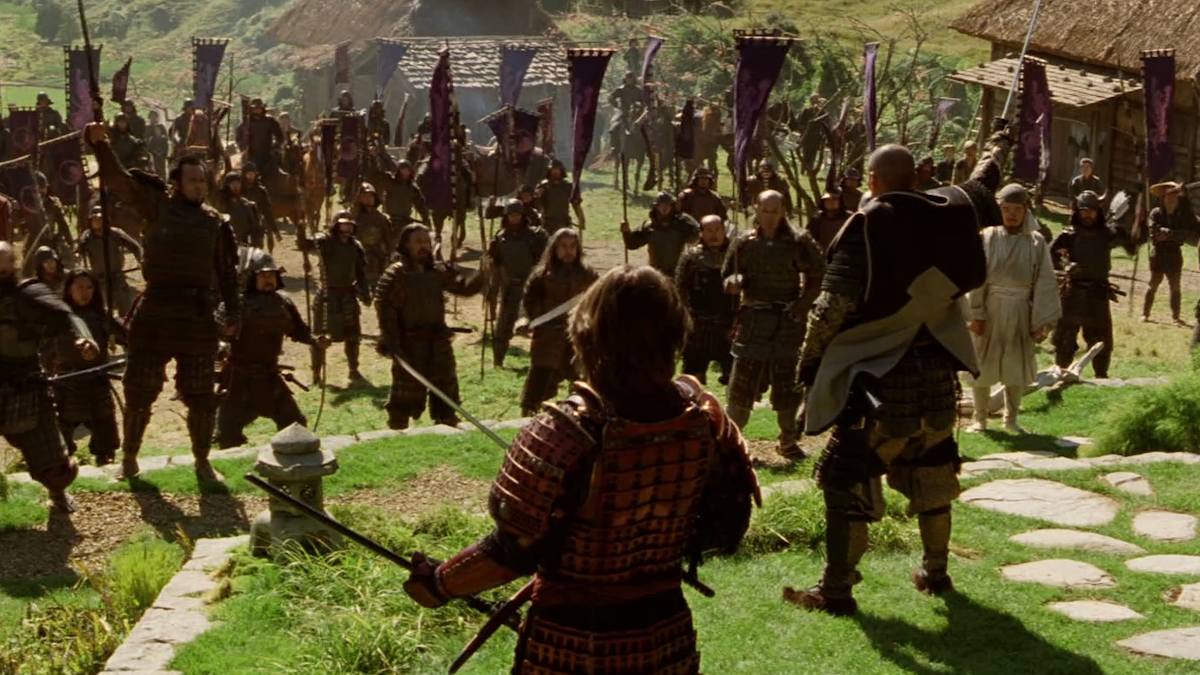
While The Last Samurai is a rather thorny movie, being an example of America’s historical fetishizing of Japan, it doesn’t stop Edward Zwick’s Oscar-nominated film from hitting where it counts. Though primarily a work of fiction, The Last Samurai drops audiences into the heart of Meiji Restoration-era Japan, the turning point for the country’s modernization away from feudal to centralized rule. This is not to forget a fundamentally cultural paradigm shift as well, with the “samurai” era and all it stands for coming to an end. While Ghost of Tsushima takes place many centuries before the Meiji Restoration, the game deals with similar themes about the end of eras.
10. Crouching Tiger, Hidden Dragon (2000)
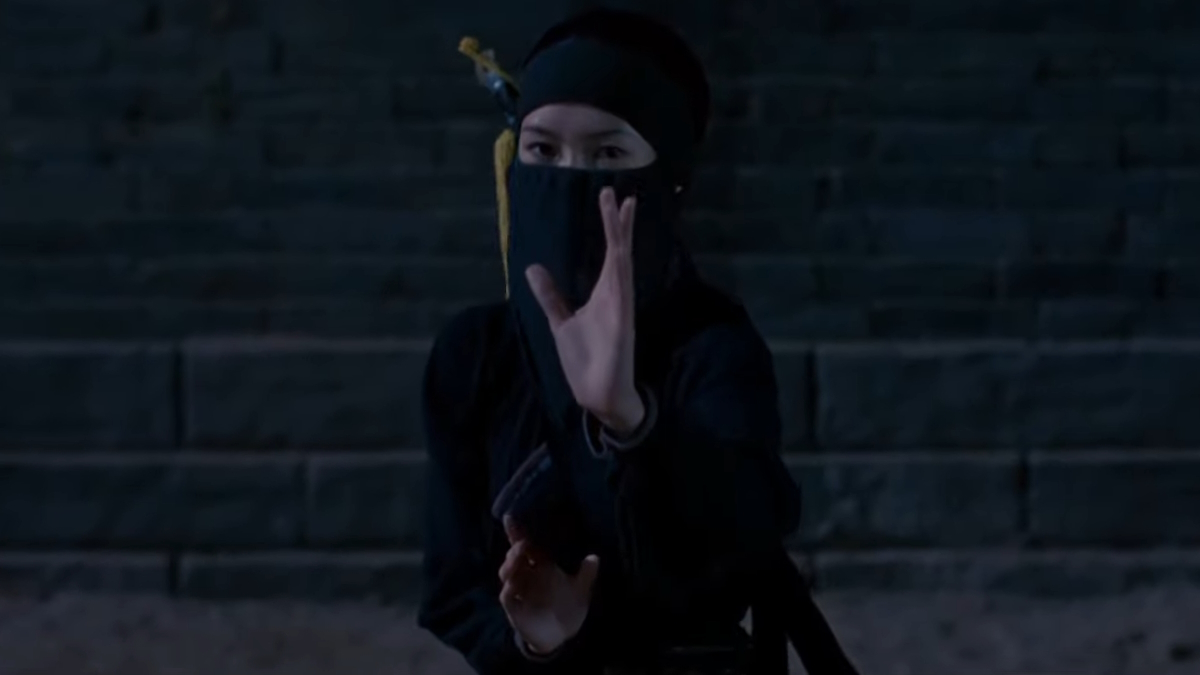
It’s impossible to put into words just how big Crouching Tiger, Hidden Dragon was in 2000. It was mainstream America’s first real taste at Chinese wuxia, and the first foreign language film to surpass the $100 million mark in the American box office. There’s real reasons why. Ang Lee’s film – based on the 1940s novel – is tremendously romantic as it is exciting, with its portrayal of kung fu masters as handsome men and women who feel love and pain deep in their souls. While the movie has neither samurai nor Mongol hordes like Ghost of Tsushima, Lee’s film is sweeping and huge in scope, a sense of awe similarly felt by Tsushima players who’ve taken their avatars to the highest peaks and looked out at an endless horizon.
9. Zatoichi (2003)
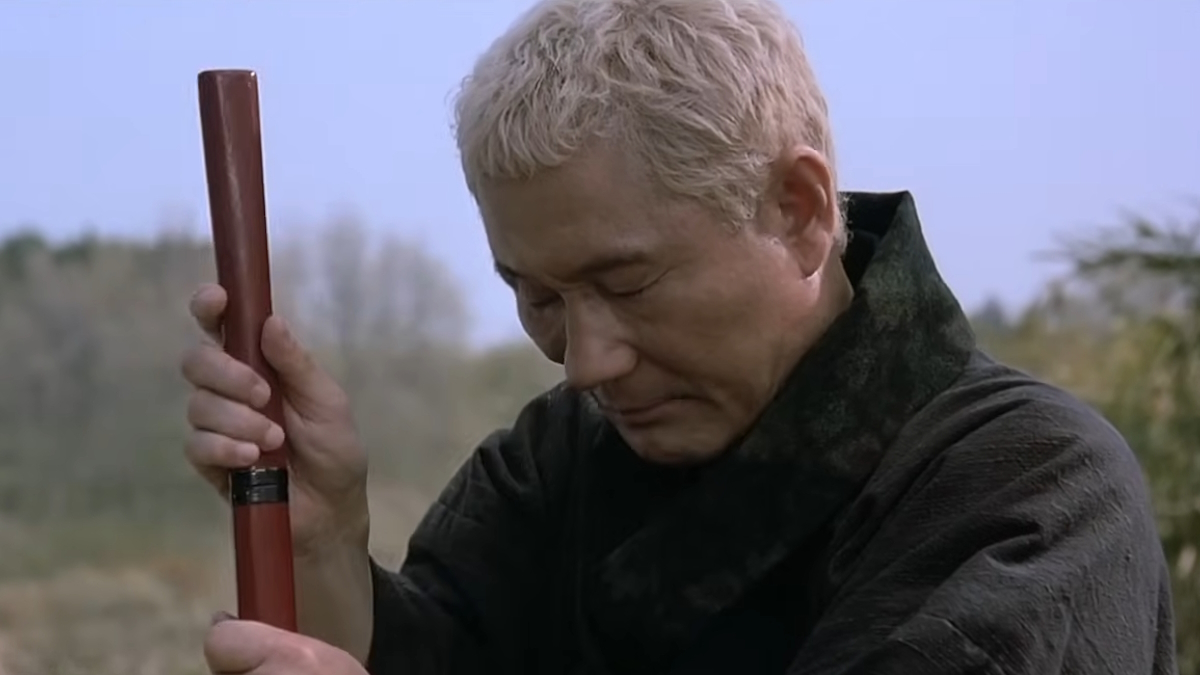
The blind swordsman Zatoichi is one of the most celebrated characters in all of Japanese cinema, with a single film series starring Shintaro Katsu lasting between 1962 and 1989 across 26 movies. (That’s not to forget a 100-episode TV show, either.) But if diving into 26 movies feels intimidating, there’s the stand-alone reboot from 2003 directed by and starring Takeshi Kitano. Titled for U.S. audiences as The Blind Swordsman: Zatoichi, Kitano plays the title character, a blind samurai with impossible skill who loans out his talents to a small town targeted by yakuza. It may not measure up to the originals, but Kitano is a mighty and masculine actor whose own touches on Zatoichi creates something that feels more original to him than a pale imitation.
8. The Wolverine (2013)
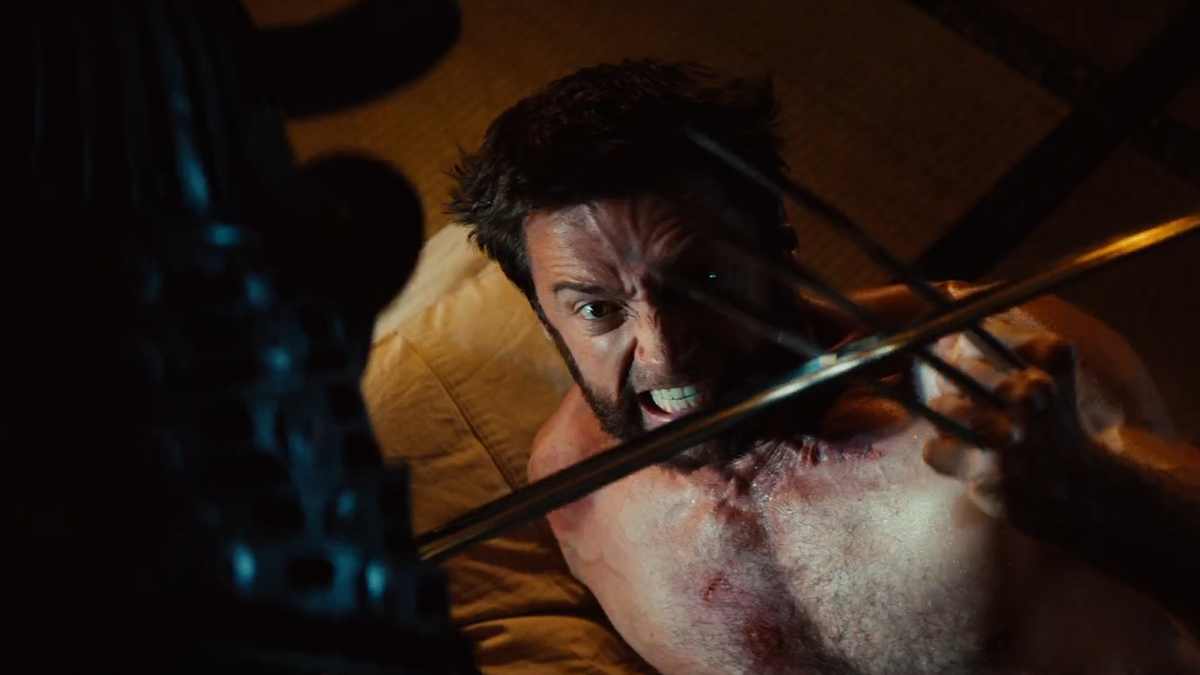
It is still one of the finest stories ever told in the Marvel Universe. Wolverine’s adventures in Japan, as told in the comics by Chris Claremont (and Frank Miller on pencils) show the most savage member of the X-Men neutralized by Japan and its distinct warrior culture. A feature film version of the comic came in the form of 2013’s The Wolverine, directed by James Mangold, whose handling of Hugh Jackman’s Wolverine is similarly careful and deliberate. A perfect balance between outlandish comic book action (Ninja! Robots! Bullet trains!) and heartfelt drama about the burdens of immortality, The Wolverine shows that just because a movie is rated PG-13 doesn’t mean it can’t cut deep.
7. Harakiri (1962)
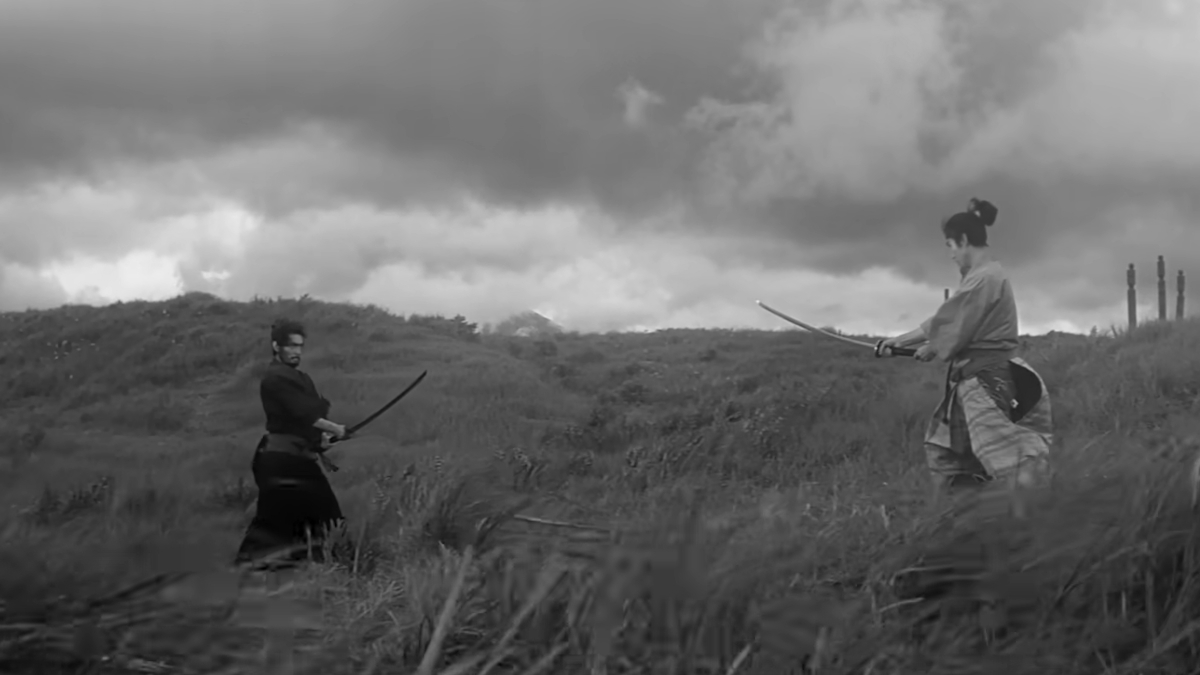
Masaki Kobayashi’s Harakiri is simply regarded as one of the best samurai movies ever made, and required viewing for everyone if you’ve never touched a PlayStation controller. Starring Tatsuya Nakadai, Harakiri is about a ronin who requests to commit ritual suicide, or harakiri, before a feudal lord, but not before explaining his story that led him to this dark point. Soon enough, an earth-shattering revelation ignites conflict. In a 2020 interview with Criterion, Ghost of Tsushima directors Nate Fox and Jason Connell specifically named Harakiri as a major inspiration. Said Fox: “They pose, swords come out, they pass, and then the music begins. It was important because it showed the negative space involved in fighting—not the cling-clang of swords but the attention and the anticipation and the pageantry of two people sizing each other up, which is so powerful and unique to these films.”
6. Kagemusha (1980)
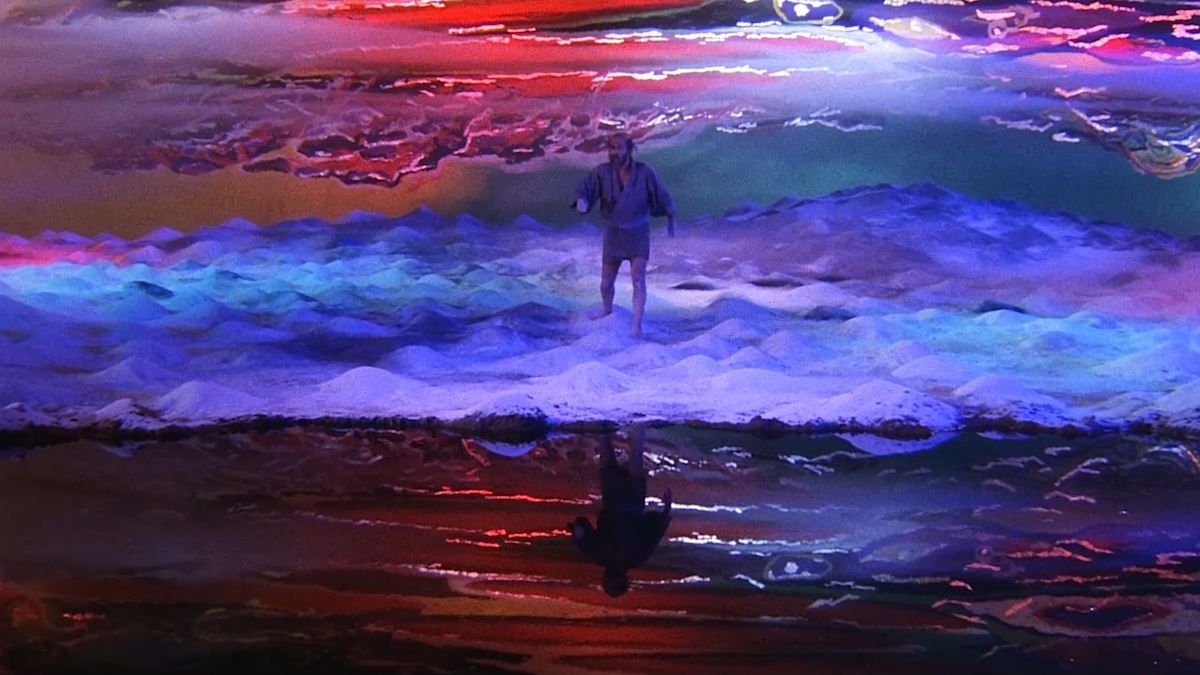
Even late-stage Akira Kurosawa was unstoppable, evidenced by his colorful 1980 masterpiece Kagemusha (translated as “shadow warrior”). Set in Sengoku-era Japan, the heads of a vulnerable clan force a lowly criminal to impersonate their deceased lord to fend off opportunistic rivals. All the while, the impersonator is haunted by the man he’s imitating, forcing him to confront the full unbearable weight of his position. Kurosawa goes wide in Kagemusha, opening up his frames to encompass the sheer majesty and magnitude of power.
5. The Samurai Trilogy (1954-1956)
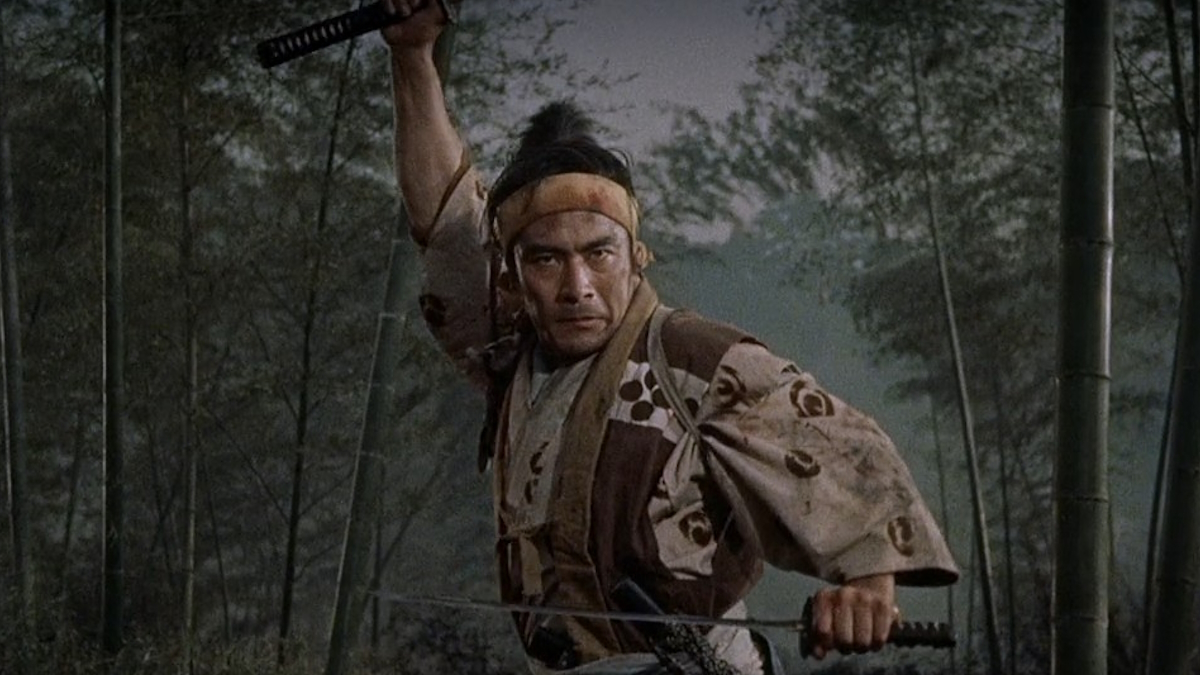
It simply feels right that one of the most renowned figures in all of Japanese folklore has a magnetic film trilogy starring none other than Toshiro Mifune. Directed by Hiroshi Inagaki, his “Samurai Trilogy” – consisting of Samurai I: Miyamoto Musashi (1954), Samurai II: Duel at Ichijoji Temple (1955), and Samurai III: Duel at Ganryu Island (1956) – trace the growth and evolution of Miyamoto Musashi (Mifune), a romantic figure renowned as an unmatched duelist. While the movies lack the gore and evisceration that the genre is now known for, it still introduced worldwide audiences to the samurai as Japan’s answer to knights and cowboys, and gave Mifune a way to cut his teeth before perfecting his craft with the likes of Kurosawa.
4. The Sword of Doom (1966)
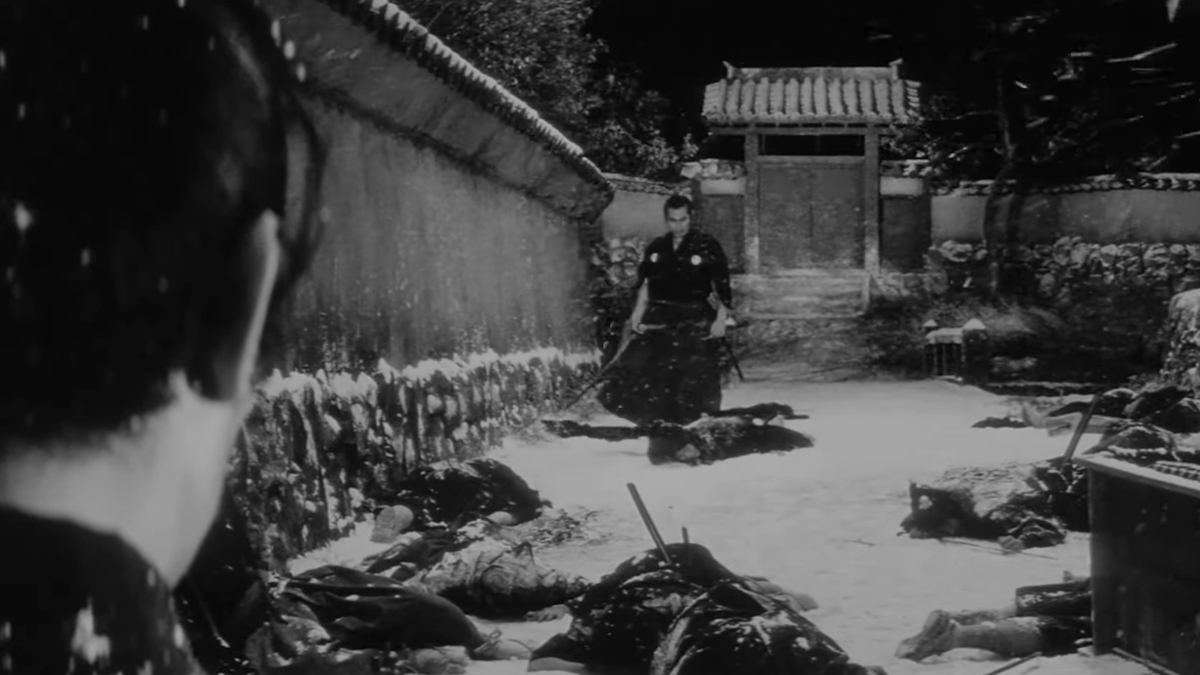
Just as the movies got comfortable with samurai as heroic figures, in came Kihachi Okamoto with his transgressive, spiritually bleak feature The Sword of Doom. Tatsuya Nakadai stars as Ryunosuke, a bloodthirsty ronin with a legitimately unsettling gaze, who uses an unorthodox method of swordplay to cut down all who stand before him. Undiscriminating over who he kills – he murders everyone from innocent old men to drunks – The Sword of Doom posits that it is entirely possible to lose oneself to your own reputation. Haunted and blistering, The Sword of Doom shows the true dark side of the blade.
3. Throne of Blood (1957)
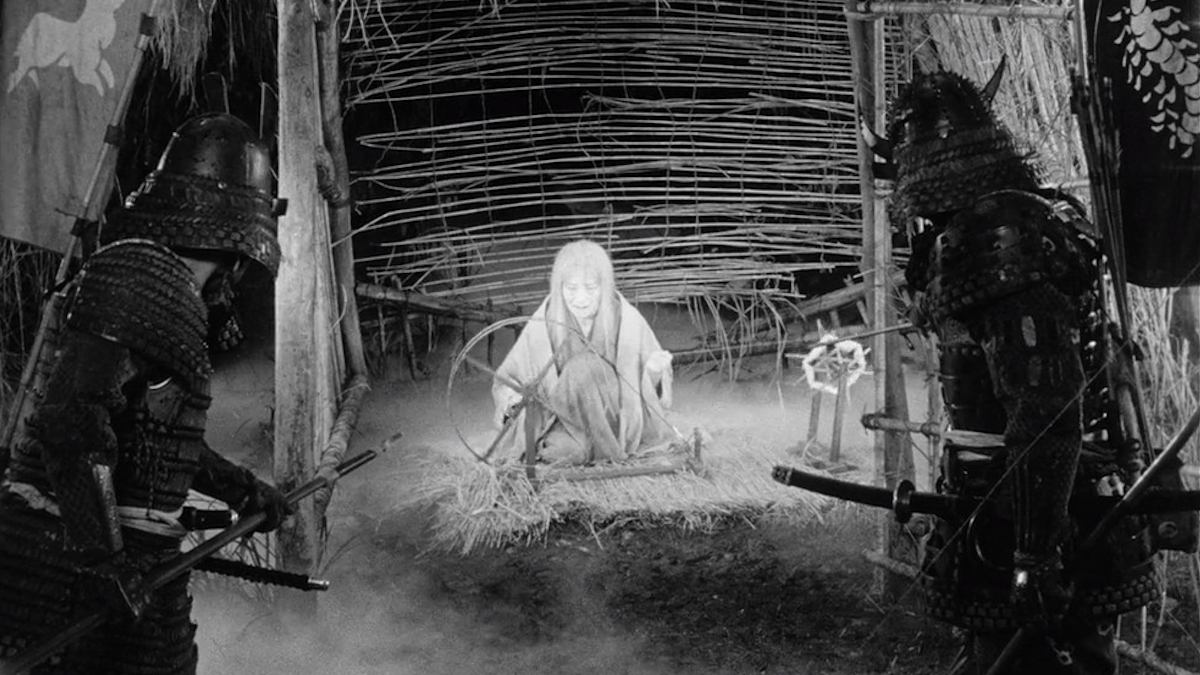
A samurai retelling of Shakespeare’s Macbeth that doubles down on the story’s eerie undercurrents, Akira Kurosawa’s Throne of Blood similarly reveals the grave cost of ambition. Toshiro Mifune plays Taketoki Washizu (the analog to Macbeth), a loyal samurai who is informed by an evil spirit who dwells in a forest of his imminent ascension – unaware it will also lead to his fall. While the plot is more or less Macbeth intact, it’s Kurosawa’s impeccable execution that makes Throne of Blood an unusual but striking example of historical horror.
2. 13 Assassins (2010)
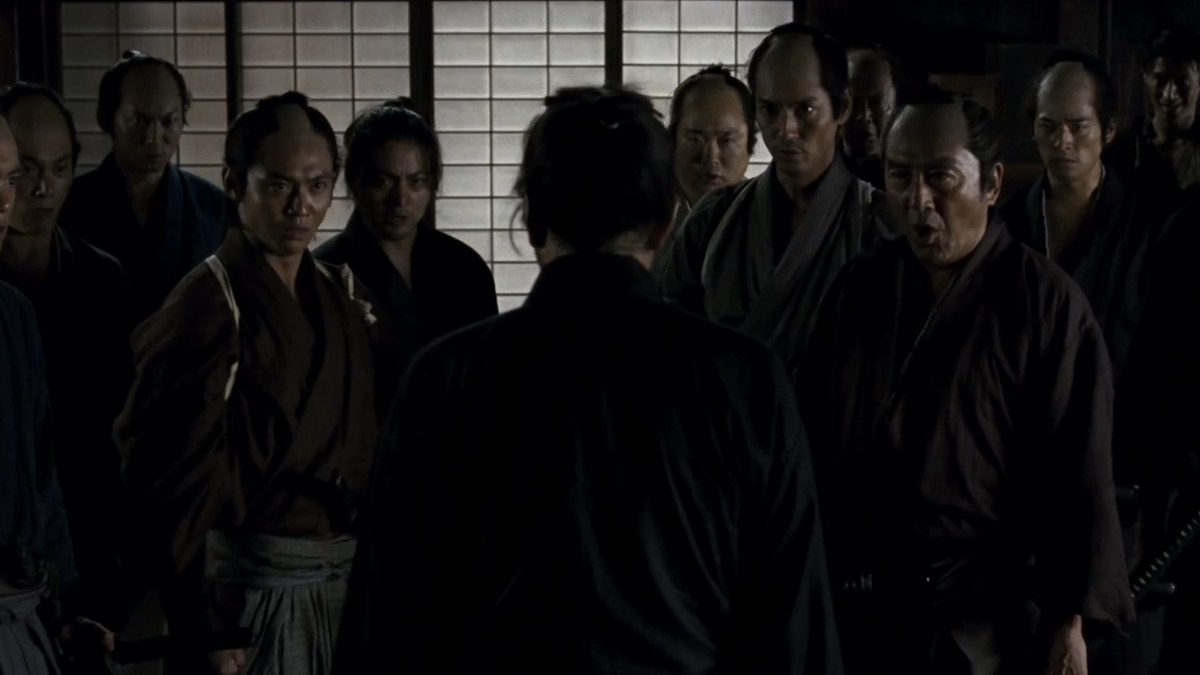
Takashi Miike’s incredible remake of Eiichi Kudo’s 1963 movie follows 13 killers who plot to kill a dangerous samurai lord on the cusp of being appointed to a higher position. While Miike unleashes his signature flavor of underground movie bloodlust, 13 Assassins also features Miike striving for prestige ambition, with a larger-than-possible scope and sense of awe that climaxes with an elongated final act sequence of the samurai fighting to their dying breath. 13 Assassins is simply so overloaded with action that it can render anyone feeling totally winded.
1. Seven Samurai (1954)
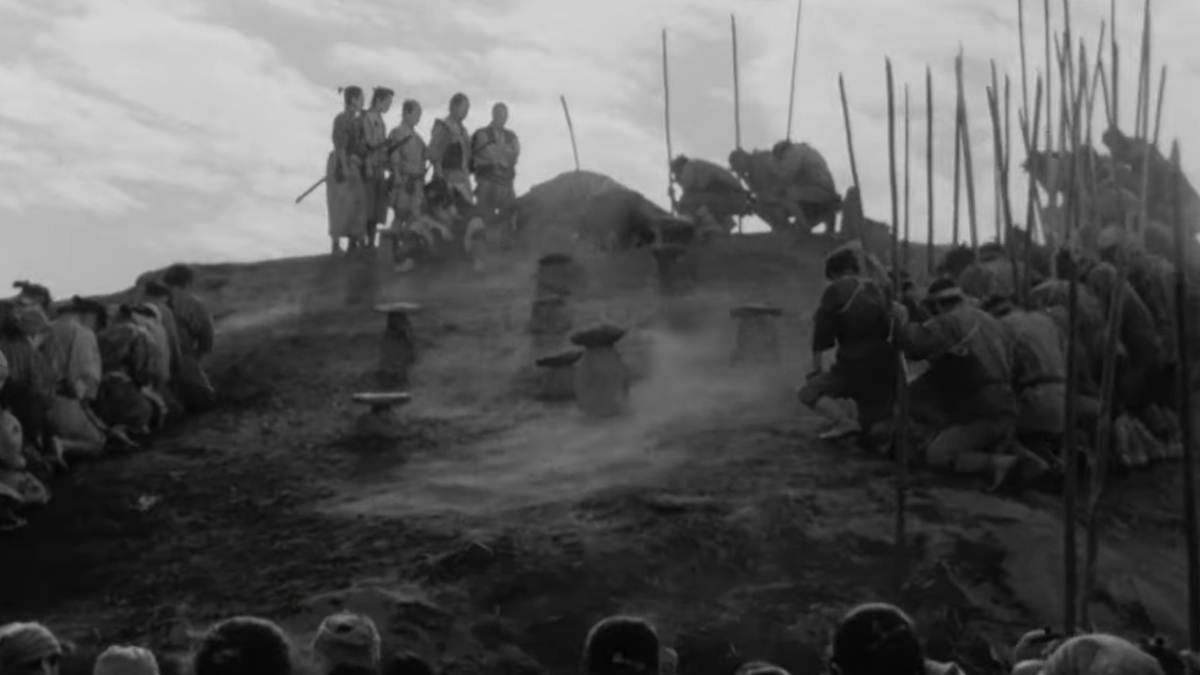
Those cowboys wouldn’t be magnificent without the samurai assembling as one. Akira Kurosawa’s towering masterpiece Seven Samurai is still one of his best works to date and one of the finest films ever made. With its prototypical tale of seven samurai lending their abilities out to a poor village at the mercy of bandits, Seven Samurai forever cemented the world’s romantic perception of samurai as noble, altruistic heroes who stand against evil. (That’s historically inaccurate, of course, but as far as movies go, it works.) An influence over everything from Star Wars to The Avengers, Seven Samurai is seminal in the history of movies, and Ghost of Tsushima players would be wise to see it for themselves.

Eric Francisco is a freelance entertainment journalist and graduate of Rutgers University. If a movie or TV show has superheroes, spaceships, kung fu, or John Cena, he's your guy to make sense of it. A former senior writer at Inverse, his byline has also appeared at Vulture, The Daily Beast, Observer, and The Mary Sue. You can find him screaming at Devils hockey games or dodging enemy fire in Call of Duty: Warzone.


